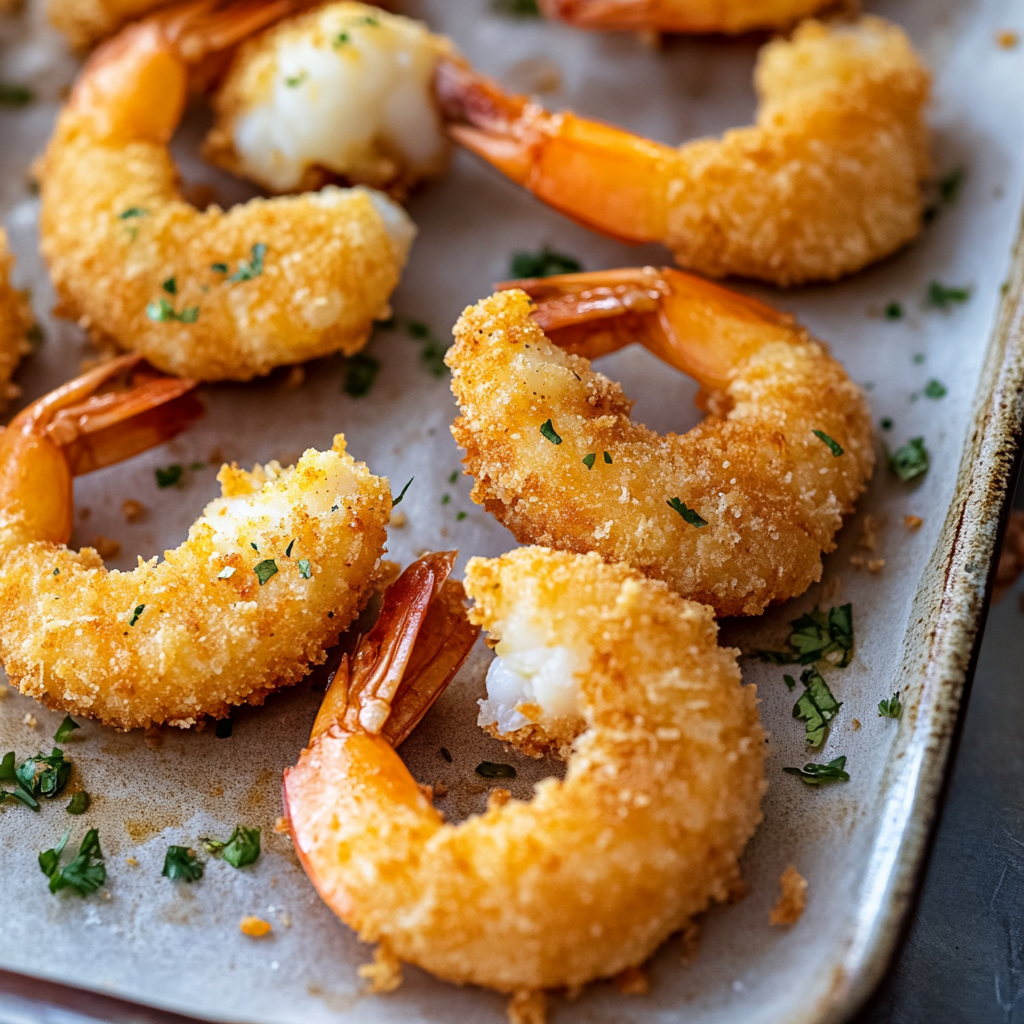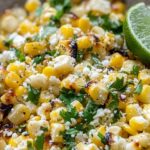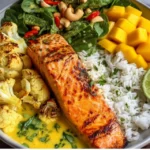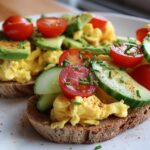Breaded shrimp is a crispy, golden, and tender seafood dish that combines the delicate flavors of shrimp with a satisfying crunchy coating. This dish is a favorite across the globe, thanks to its versatility, ease of preparation, and delightful texture. It can be served as a snack, appetizer, or main dish, and pairs well with various dips and sides. Whether you’re hosting a gathering or simply enjoying a casual meal, breaded shrimp is sure to impress.
Ingredients:
- 1 lb (450 g) large shrimp, peeled and deveined
- 1 cup breadcrumbs (panko for extra crunch or regular breadcrumbs)
- ½ cup all-purpose flour
- 2 large eggs
- 1 tsp garlic powder
- 1 tsp paprika
- Salt and pepper to taste
- Vegetable oil for frying (canola, sunflower, or peanut oil)
- Lemon wedges and dipping sauce for serving
Directions:
- Prepare the Shrimp:
- Pat the shrimp dry with paper towels to ensure the coating sticks.
- Season with salt, pepper, garlic powder, and paprika.
- Set Up Your Breading Station:
- Place the flour in a shallow bowl.
- Beat the eggs in a second bowl.
- Add breadcrumbs to a third bowl.
- Bread the Shrimp:
- Dip each shrimp into the flour, ensuring it’s lightly coated.
- Submerge the shrimp into the egg mixture, letting any excess drip off.
- Roll the shrimp in breadcrumbs, pressing gently to adhere the coating.
- Fry the Shrimp:
- Heat oil in a deep skillet or frying pan to 350°F (175°C).
- Fry the shrimp in batches, ensuring not to overcrowd the pan. Cook for 2–3 minutes per side or until golden brown.
- Remove with a slotted spoon and place on a paper towel-lined plate to drain excess oil.
- Serve:
- Plate the shrimp with lemon wedges and your choice of dipping sauces, such as cocktail sauce, aioli, or sweet chili sauce.
Nutritional Value:
- Pros:
- High Protein: Shrimp is a great source of lean protein, which is essential for muscle repair and growth.
- Rich in Micronutrients: Shrimp contains iodine (essential for thyroid function) and selenium (a powerful antioxidant).
- Low in Calories: Compared to other protein sources, shrimp is low in calories.
- Cons:
- Higher Fat Content: The frying process adds extra calories and fat.
- Increased Carbohydrates: The breading adds extra carbs, which may be a concern for those on low-carb diets.
For a healthier version, you can opt for air-frying or baking the shrimp, and choose whole-grain breadcrumbs for added fiber.
Tips for Success:
- Fresh Shrimp: Fresh shrimp provides the best flavor and texture. If using frozen shrimp, thaw thoroughly and pat dry before breading.
- Control the Oil Temperature: Use a thermometer to maintain the oil at the right temperature to avoid greasy shrimp.
- Double Coat for Extra Crunch: For an even thicker and crispier coating, repeat the egg and breadcrumb steps.
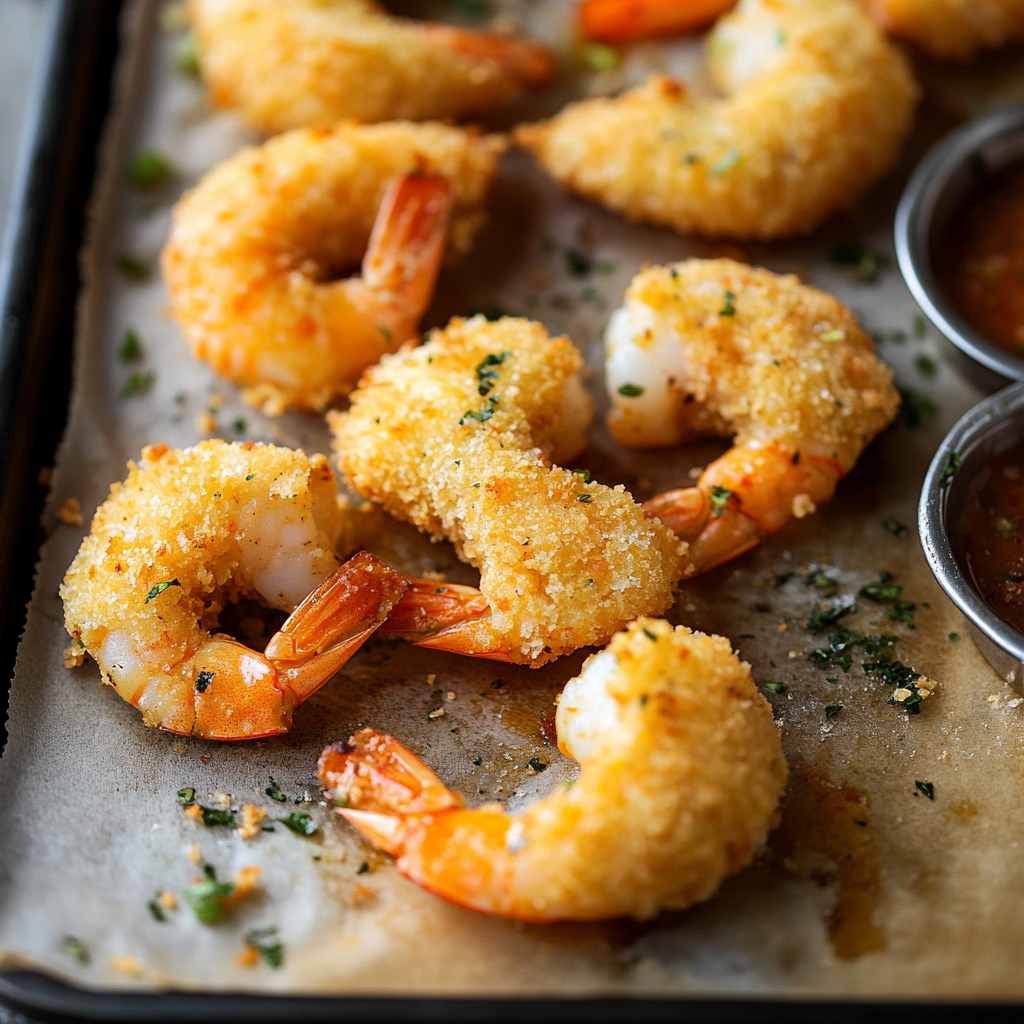
Breaded Shrimp: A Global Favorite for Any Occasion
Breaded shrimp, with its crispy, golden exterior and tender, juicy interior, is a seafood dish that has captured the hearts and taste buds of people around the world. Whether enjoyed as an appetizer, snack, or main course, this dish is incredibly versatile and beloved for its delightful texture and rich flavor. From backyard barbecues to elegant dinners, breaded shrimp can be adapted to suit any occasion. In this article, we’ll dive deep into the history, preparation, variations, and health considerations of breaded shrimp, along with why it remains a staple in kitchens globally.
The Origins of Breaded Shrimp
Shrimp has been a popular food for thousands of years, dating back to ancient civilizations. Archaeological evidence suggests that shrimp was consumed as early as the Roman Empire, where it was considered a delicacy. However, the method of breading and frying shrimp likely evolved much later. The breading process as we know it today can be traced back to European culinary traditions, particularly in countries like France and Spain. The practice of coating food in breadcrumbs before frying became widespread during the Renaissance era, where it was used to add texture and enhance flavors in various dishes.
While breaded shrimp itself doesn’t have a singular “origin,” the concept of frying shrimp in a crispy coating spread rapidly across the globe, especially in countries where shrimp fishing was prominent. In the United States, breaded shrimp became popular in the 20th century, particularly in Southern and coastal regions. This method of preparation became synonymous with seafood restaurants, fast food chains, and home cooking, where it was often served as an easy-to-make yet flavorful dish.
Why Breaded Shrimp Is So Popular
The reason breaded shrimp has become so widely beloved lies in its combination of flavors and textures. The delicate, slightly sweet taste of shrimp is complemented by the savory, crunchy exterior that forms during the breading and frying process. This contrast of textures—crispy on the outside, tender on the inside—is a big part of the appeal. Whether served with cocktail sauce, aioli, or sweet chili sauce, breaded shrimp pairs wonderfully with a wide range of dipping options, making it suitable for both casual snacking and more refined gatherings.
Moreover, breaded shrimp is incredibly adaptable. The versatility of the dish allows for different variations of the breading, which can be made using panko breadcrumbs for extra crunch, or seasoned with herbs and spices to enhance the flavor profile. It can be served as an appetizer at a dinner party, as a snack during a sports game, or even as a main dish for lunch or dinner. Breaded shrimp can also be incorporated into various recipes, such as shrimp tacos, shrimp salads, or even pasta dishes, making it a go-to ingredient for many chefs and home cooks alike.
The Process of Making Breaded Shrimp
Making breaded shrimp is straightforward, yet it requires attention to detail to achieve the perfect balance of flavor and texture. The first step is to prepare the shrimp. It’s essential to peel and devein the shrimp, ensuring they are clean and ready to be coated. After patting the shrimp dry with paper towels, they are seasoned with salt, pepper, garlic powder, and paprika. This seasoning step is crucial because it infuses the shrimp with flavor, which complements the breading.
Next, the breading station is set up. This involves three shallow bowls: one for flour, one for beaten eggs, and one for breadcrumbs. Each shrimp is dipped first into the flour, then the egg mixture, and finally the breadcrumbs. This triple-layer coating ensures that the breading adheres properly and crisps up during frying.
Frying the shrimp is the most critical part of the process. It’s important to heat the oil to the right temperature—around 350°F (175°C)—to ensure that the shrimp cook quickly and evenly. Overcrowding the pan can lead to uneven cooking and soggy shrimp, so it’s best to fry in small batches. The shrimp should be cooked for about 2–3 minutes per side or until they are golden brown and crispy.
After frying, the shrimp are placed on a paper towel-lined plate to drain excess oil. This step helps maintain the crispiness of the coating and reduces the amount of residual oil. Finally, the shrimp are ready to be served, often accompanied by lemon wedges and a variety of dipping sauces, such as cocktail sauce, tartar sauce, or a zesty aioli.
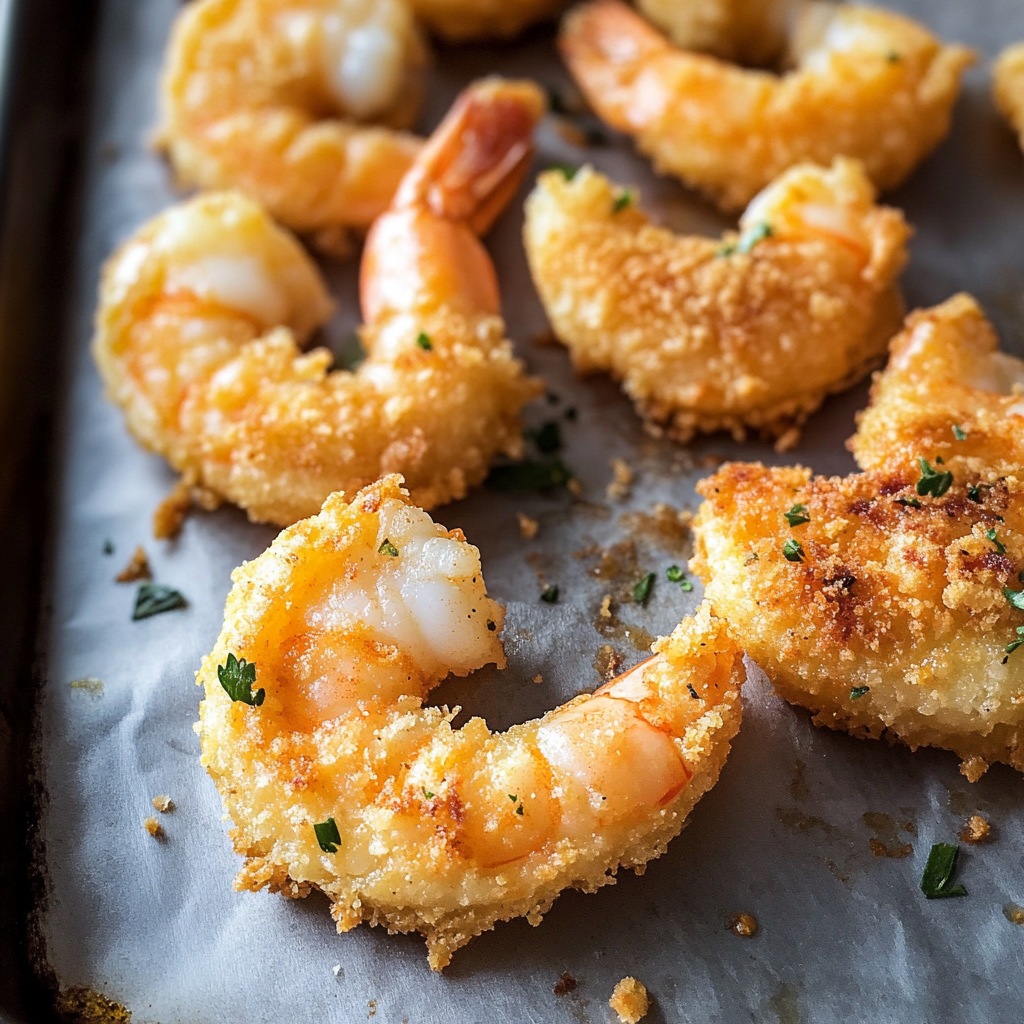
Variations on Breaded Shrimp
While the classic version of breaded shrimp is a favorite for many, there are countless ways to experiment with this dish, adding your own flair and making it your own. One popular variation is Coconut Breaded Shrimp, where shredded coconut is mixed with breadcrumbs to add a sweet, tropical twist to the flavor profile. This variation is especially popular in Caribbean and Southeast Asian cuisines, where shrimp is often paired with coconut.
Another variation is Spicy Breaded Shrimp, where additional spices like cayenne pepper, chili powder, or hot sauce are incorporated into the breading. This version is perfect for those who enjoy a little heat with their seafood. You can also experiment with different dipping sauces, ranging from creamy avocado-based sauces to tangy mustard-based options, to elevate the dish even further.
For those looking to make a healthier version of breaded shrimp, you can opt to bake the shrimp instead of frying them. Baking at a high temperature (around 400°F or 200°C) allows the shrimp to cook through while still developing a crispy crust. You can also try using whole wheat breadcrumbs or even almond flour for a gluten-free alternative.
Nutritional Value of Breaded Shrimp
Like many seafood dishes, breaded shrimp offers several nutritional benefits. Shrimp is a high-protein food, which is important for muscle building and repair, making it an excellent choice for those looking to increase their protein intake. Additionally, shrimp is a good source of essential vitamins and minerals, including iodine, which supports thyroid function, and selenium, a powerful antioxidant that helps protect cells from oxidative stress.
However, there are also some drawbacks to consider when consuming breaded shrimp. One of the primary concerns is the fried aspect of the dish. The oil used for frying adds additional fat and calories to the shrimp, which can be a concern for individuals watching their caloric intake or trying to maintain a healthier diet. Additionally, the breading adds carbohydrates, making the dish higher in carbs compared to non-breaded shrimp. To mitigate these issues, you can opt for healthier cooking methods, such as baking or air-frying, to reduce the amount of fat and calories in the dish.
Breaded Shrimp in Different Cuisines
While breaded shrimp is most commonly associated with American and European cuisines, it has found its place in many other culinary traditions around the world. In Japanese cuisine, for example, a similar dish called Ebi Fry is made using panko breadcrumbs, resulting in an extra crispy texture. Ebi Fry is often served with a side of shredded cabbage and a tangy sauce known as tonkatsu sauce.
In Brazil, breaded shrimp is often served as a filling for pastéis, a popular street food snack. The shrimp is typically mixed with cheese or other ingredients and then wrapped in dough before being fried. In Southern China, shrimp may be coated in a batter made from rice flour and deep-fried to achieve a light, crunchy coating.
Conclusion
Breaded shrimp is more than just a simple seafood dish—it’s a global favorite enjoyed in many different forms and variations. Its delicious balance of crispy breading and tender shrimp makes it an appealing choice for a wide range of occasions, whether casual or formal. By experimenting with different spices, coatings, and dipping sauces, you can make breaded shrimp your own, adapting it to suit your personal taste or dietary preferences. Whether you choose to fry, bake, or even air-fry, breaded shrimp is a versatile and satisfying dish that continues to stand the test of time in kitchens around the world.

